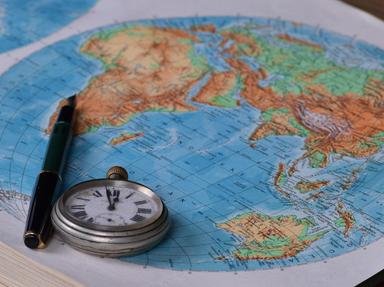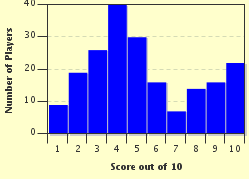Quiz Answer Key and Fun Facts
1. We begin our lightning world tour overlooking the capital of a mountainous, landlocked country. Located 6,000 feet above sea level on historic trade routes abutting the Hindu Kush mountains, the city itself is some 3,500 years old. Which country are we visiting?
2. Our next stop is in Europe, at an historic city that has been designated as a UNESCO World Heritage Site. The photo shows the canal with the famous Belfry in the background. The College of Europe, an elite university for European studies, is also located here. Which country are we now in?
3. Our next destination is another landlocked country in the high mountains. The picture shows a popular landmark, 'Arbol de Piedra' ("stone tree"), a 23-foot high sandstone formation shaped like a stunted tree. A democratic republic, this country of around 10 million people declared its independence in 1825. Which country are we in?
4. Our next destination is a Pacific Ocean nation comprising 330 islands, more than a hundred of which are permanently occupied. The photo shows the heart-shaped Tavarua Island, a popular tourist destination surrounded by coral reefs. Located some 1,300 miles northeast of New Zealand, which country is this?
5. Our next stop is in continental Asia's smallest country. The picture shows a popular tourist destination, a UNESCO World Heritage Site since 1998,'Ouadi Qadisha' ("The Holy Valley") and the nearby 'Horsh Arz el-Rab' ("Forest of the Cedars of God") in the north of the country. Evidence of humans here dates back more than 7,000 years, before recorded history began. Which country is this?
6. Our next destination is the world's second-most populous landlocked country. Although it has a total area the size of the UK, much of its southern territory encompasses the world's largest tropical lake. Its southwest border is dominated by the Rwenzori Mountains National Park (pictured), a UNESCO World Heritage Site and home to spectacular waterfalls and glaciers. Which country are we visiting?
7. Our next stop is on one of the world's smaller countries, covering just 238 square miles with a population of 175,000 (2010 Census). Part of the Lesser Antilles, sun and sand make this former colony of both France and Britain a popular tourist destination. The spectacular Pitons (pictured) are two volcanic plugs located off the southeast corner of this pear-shaped island. Which country is this?
8. We return to Europe for our next stop and, in particular, a city founded in the second century BC, built on a narrow hill surrounded on three sides by a river. The photo shows the skyline of the historic city with the 13th-century Munster, a Protestant Gothic cathedral, in the background and the spire of Nydegg Church in the foreground. We are visiting the de facto capital of which country?
9. Our next destination is a region of historic trade routes and vast empires where at least four religions have originated. There are more than 30 UNESCO World Heritage Sites for the visitor to explore. If you want to see wildlife in its natural habitat, options include the Kaziranga Wildlife Sanctuary (pictured), the Manas Wildlife Sanctuary or Keoladeo National Park. Which country are we now in?
10. The final destination of this, the third, leg of our tour is to an island nation that is the only country outside Latin America to use the peso as their currency. Proximity to both the equator and the Pacific Ring of Fire has made this country one of the world's most biodiverse. Natural wonders include the Puerto Princesa Subterranean River National Park (pictured). Which country are we now visiting?
Source: Author
EnglishJedi
This quiz was reviewed by FunTrivia editor
spanishliz before going online.
Any errors found in FunTrivia content are routinely corrected through our feedback system.

